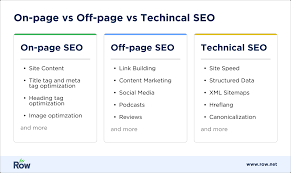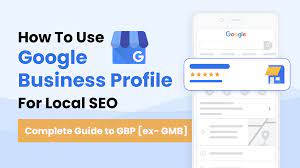The Importance of On-Site SEO for Your Website
Search Engine Optimization (SEO) is a crucial aspect of any successful online presence. While off-site SEO strategies like link-building and social media marketing are important, on-site SEO plays a significant role in determining your website’s search engine rankings.
What is On-Site SEO?
On-site SEO refers to the optimization of elements on your website to improve its visibility and ranking on search engines. This includes optimizing content, meta tags, URLs, images, and internal linking structure to make it easier for search engines to crawl and index your site.
The Benefits of On-Site SEO
Implementing effective on-site SEO strategies can have several benefits for your website:
- Improved Search Engine Rankings: By optimizing your website’s on-site elements, you increase the chances of ranking higher in search engine results pages (SERPs).
- Enhanced User Experience: A well-optimized website is user-friendly and provides a seamless browsing experience for visitors.
- Increased Organic Traffic: Higher search engine rankings lead to increased organic traffic to your site, as more users are likely to click on top-ranking results.
- Better Conversion Rates: Optimized websites tend to have better conversion rates, as they are more likely to attract relevant traffic that converts into leads or customers.
Key On-Site SEO Factors
Some key factors to consider when optimizing your website for search engines include:
- Title Tags: Ensure each page has a unique and descriptive title tag that includes relevant keywords.
- Meta Descriptions: Write compelling meta descriptions that accurately describe the page’s content and encourage users to click.
- Keyword Optimization: Use relevant keywords strategically throughout your content without keyword stuffing.
- URL Structure: Create clean and descriptive URLs that are easy for both users and search engines to understand.
- Internal Linking: Link related pages within your site to improve navigation and distribute link equity.
- Image Optimization: Optimize images by using descriptive filenames and alt text tags that include relevant keywords.
In Conclusion
In conclusion, on-site SEO is a fundamental aspect of optimizing your website for search engines. By implementing effective on-site strategies, you can improve your site’s visibility, attract more organic traffic, and ultimately achieve better online success. Remember to regularly review and update your on-site SEO efforts to stay ahead in the competitive online landscape.
5 Essential On-Site SEO Strategies for Enhancing Webpage Visibility and User Experience
- Create unique and relevant page titles for each webpage.
- Optimize meta descriptions with targeted keywords to improve click-through rates.
- Use heading tags (H1, H2, etc.) to structure content and improve readability.
- Optimize images by using descriptive filenames and alt text for better accessibility and SEO.
- Ensure fast page loading speed by optimizing images, minifying CSS/JS files, and leveraging browser caching.
Create unique and relevant page titles for each webpage.
Creating unique and relevant page titles for each webpage is a critical aspect of on-site SEO. By crafting descriptive titles that accurately reflect the content of the page and include relevant keywords, you not only improve your website’s visibility in search engine results but also enhance user experience. Unique page titles help search engines understand the purpose of each webpage, making it easier for them to index and rank your site appropriately. Additionally, compelling page titles can entice users to click on your link in search results, increasing the likelihood of driving organic traffic to your website.
Optimize meta descriptions with targeted keywords to improve click-through rates.
Optimizing meta descriptions with targeted keywords is a crucial aspect of on-site SEO that can significantly impact click-through rates. By crafting compelling meta descriptions that include relevant keywords related to the page’s content, you can attract the attention of users and entice them to click on your website in search engine results. A well-optimized meta description not only improves visibility but also increases the likelihood of users engaging with your site, ultimately driving more traffic and potential conversions.
Use heading tags (H1, H2, etc.) to structure content and improve readability.
Utilizing heading tags such as H1, H2, and so on is a valuable tip for on-site SEO. By structuring content with appropriate heading tags, you not only enhance the readability of your webpage but also provide search engines with a clear hierarchy of information. This practice helps search engine crawlers better understand the context and relevance of different sections within your content, ultimately improving the overall SEO performance of your website.
Optimize images by using descriptive filenames and alt text for better accessibility and SEO.
Optimizing images is a crucial aspect of on-site SEO. By using descriptive filenames and alt text for images, you not only improve accessibility for users with visual impairments but also enhance your website’s SEO. Descriptive filenames and alt text provide search engines with valuable information about the content of the image, making it more likely to appear in relevant search results. This simple yet effective practice can significantly boost your website’s visibility and overall user experience.
Ensure fast page loading speed by optimizing images, minifying CSS/JS files, and leveraging browser caching.
To enhance your on-site SEO performance, it is crucial to prioritize fast page loading speed. This can be achieved by optimizing images to reduce file sizes, minifying CSS/JS files to streamline code, and leveraging browser caching to store website data locally. By implementing these strategies, you can significantly improve user experience, reduce bounce rates, and increase the likelihood of higher search engine rankings. Fast-loading pages not only benefit your SEO efforts but also contribute to overall website performance and user satisfaction.




